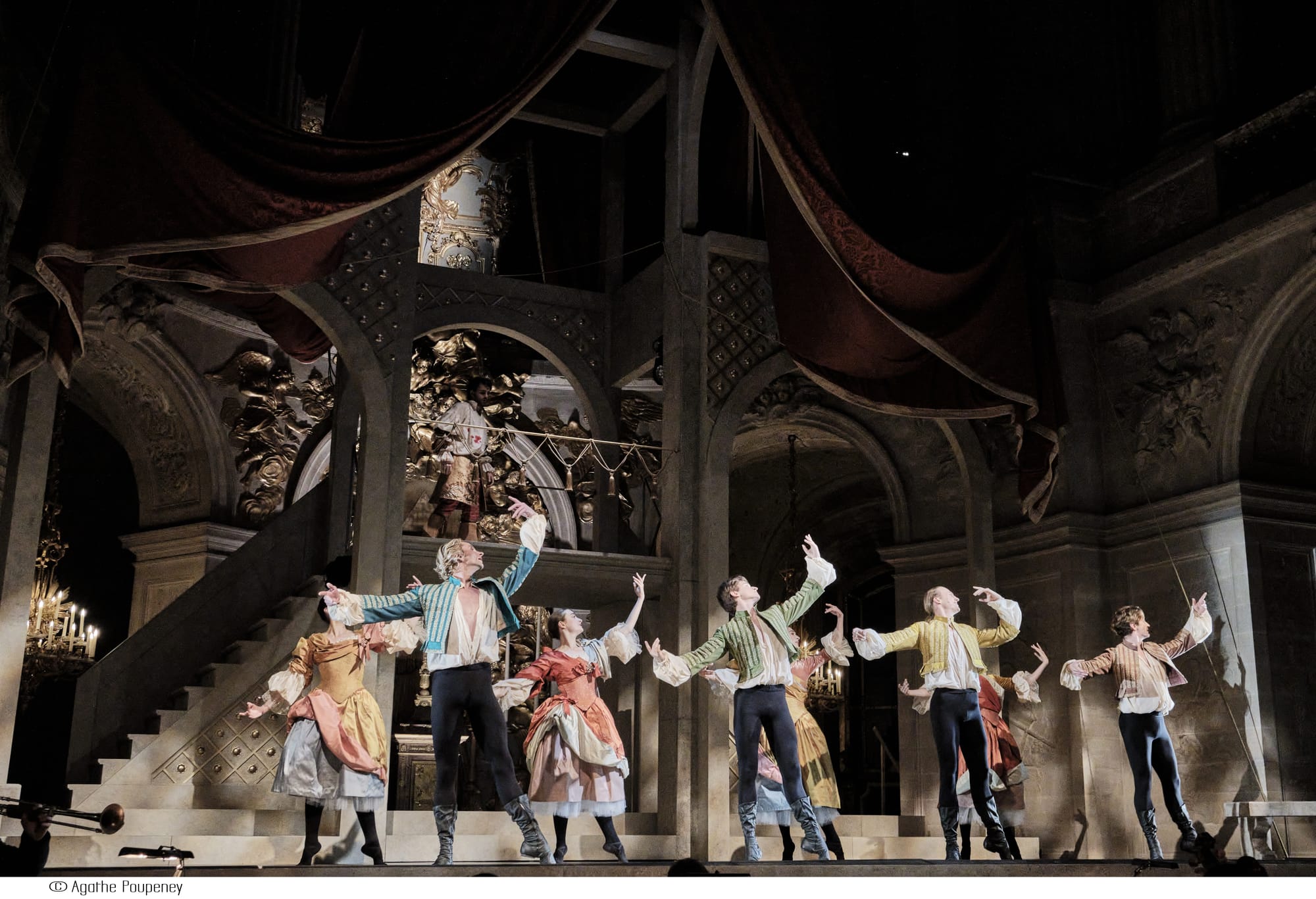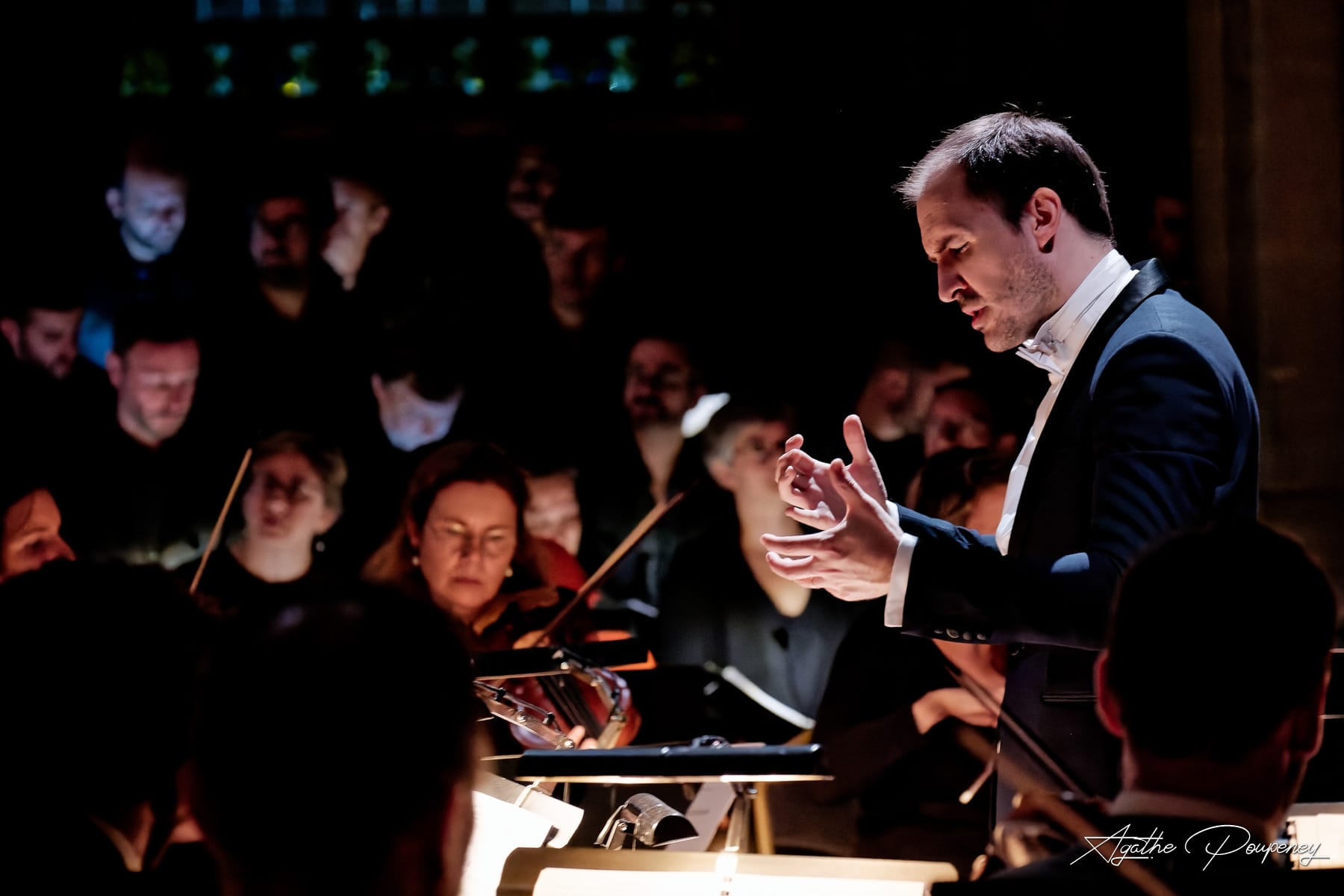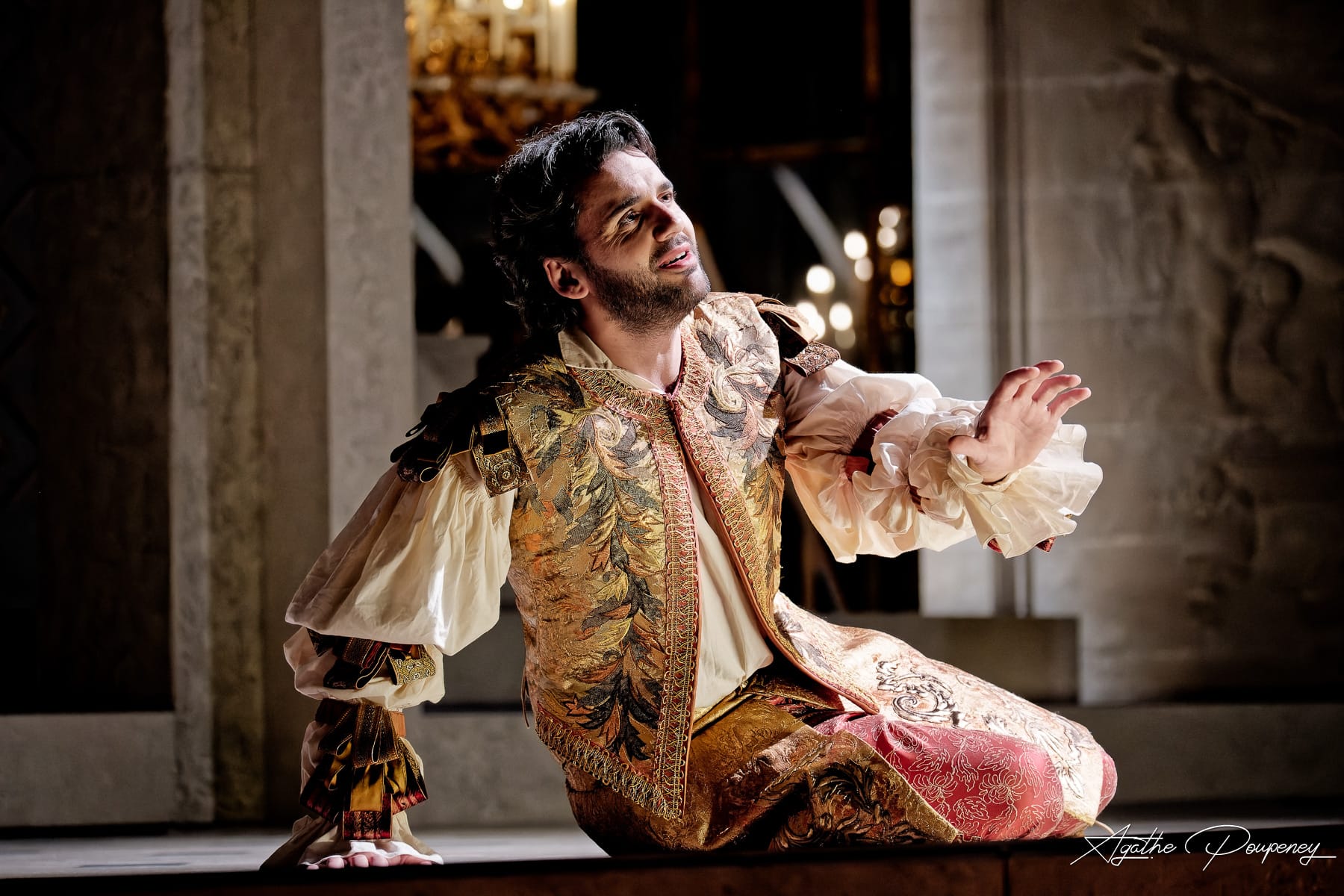
Marc-Antoine Charpentier David et Jonathas Cast; Ballet de l’Opéra oyal; Margeuerite Louise Choir and Orchestra / Gaéran Jarry. Chapel Royal, Château de Versailles, France, 16.05.2025
Production:
Director – Mashall Pynkoski
Choreography – Jeannette-Lajeunesse Zingg
Sets – Antoine and Roland Fontaine
Costumes – Chrisian Lacroix (assisted by Jean-Hilippe Pons)
Lighting – Hervé Gary
Cast:
David – Reinaud Van Mechelen
Jonathas – Caroline Arnaud
Saul – David Witczak
Pythoness – François-Olivier Jean
Joabel – Antonin Robespierre
Samuel’s Ghost – Geoffroy Buffière
Achis – Cyril Costanzo
Marc-Antoine Charpentier’s ‘tragédie en musique” David et Jonathas (to a libretto by Father François Bretonneau) was first performed in 1688 at Collège Louis-le-Grand, Paris, in 1688. it is ,more specifically, a ‘tragédie blblique’. Hence, perhaps, the Grand Chapel at Versailles as setting, not the opera house.
The present Versailles production by Marshall Pynkoski was first seen in 2022; ten years earlier, William Christie staged the work at Aix. Thinking of Christie (who also recorded this piece), it was he who featured most recently in this particular Charpentier, a selection from the Leçons de Ténèbres at Wigmore Hall, almost exactly a month ago (review).
Here, it was Gaétan Jarry in charge, with his Ensemble Marguerite Louise. The sheer power of Jarry’s Act 1 ‘Ouverture’ was remarkable. I was lucky in sitting so close, which enabled an almost intrusive view: his upbeat shot out laterally like a rocket, the orchestra entering with razor accuracy, charged with electricity. The CD/DVD/Bluray release for the previous incarnation of this staging (on Château de Vesailles Spéctcles does not come close; neither does William Christie in his late 1980s recording). Jarry is very expressive in his movements but, rather like Bernstein’s histrionics, there is a firm technique underlying everything he does (and it is all, in the final analysis, directed towards the music and musicians).

The staging, buy Marshall Pynkoski (who also staged a memorable Grétry Richard Coeur de Leon a Versailles), made maximal use of the space in the Chapel Royal at Versailles: via Antoine and Roland Fontaine’s set: a pair of dramatic drapes certainly had their potential maximised. A two-tier structure placed centrally enabled Samuel’s ghost to tower down imposingly. Chorus was to the right of the orchestra on ground level, which made for some interesting antiphonal effects when Charpentier writes exchanges between choir and soloists (grouped as one).
Charpentier’ s opera encompasses a huge range of dynamics (there are moments of real pomp against moments of truly touching stasis). It is testament to Jarry’s vision that there was a sense of dramatic arc, of inevitability, running through the succession of dramatic vocal scenes (and superbly performed, vibrant dances), probably the single defining factor to this performances’ success.
Indeed, a word or two has to go to the dancers, a vital part of the equation; Charpentier’s music came vibrantly to life via movement, stylised and beautiful, Jeannette-Lajeunesse Zingg’s choreography perfectly placed.
The Prologue features Saul (who has the Biblical David as prisoner), and his encounter with a Pythoness (read witch), asking her to evoke the shade of Samuel (Saul’s predecessor). It’s not that the ghost appears (although he does); it is the compelling nature of the Pythoness’ music and, here, her delivery. I say ‘her,’ but the part was sung by counter-tenor François-Olivier Jean, clad in acres of Baroque bling; courtesy of designer Christian Lacroix (assisted by Jean-Philippe Pons). the ghost was sung by the sonorous bass Geoffroy Bouffière, a proper basso profondo and feeling for all the world like a foreshadowing of the ghost inf Verdi’s Don Carlo. David Witczak sang Saul, and embraced every aspect of the role; his cry of ‘Barbare’ in the third act confrontation with David was spine-chilling. There is an argument that Saul is the principal character of David et Jonathas, his music (and emotions) tormented, torn, and were vividly characterised here.
It is David’s lament in act 1 scene 3 where the true profundity of Charpentier’s writing came fully into focus, Reinoud Van Machelen in purest voice (his ‘Ciel! Quel triste combat’. unforgettable). This is a still point in the action, while his ‘Allez ,allez’ revealed a clarion tenor (a reminder, too. Of his assumption of the titular role in the 2019 performances of Grétry’s Richard). His ‘Souverain juge des mortels’ seemed the ideal prolongation of the astonishing Prélude that opens the fourth act (itself rife with sweetly painful dissonance); his later ‘Jemain amour’ seemed to reveal the true potency of French Baroque opera in miniature, an alchemical reduction of vast power.

Charpentier’s music moves from soul-shredding profundity to outward-facing dance, sometimes in heartbeat. There is real compositional virtuosity contained here, and Jarry and his forces reacted throughout with lightening reflexes.
It is in the second act we meet Jonathas, played here by a female. From her first ’A votre bras vainquer rien ne peut résister,’ Caroline Arnaud showed herself a remarkable interpreter, her voice pure and clear, the perfect complement to David; Charpentier’s writing in the third act enables her to shine, and so she did. It was when their voices conjoined that the magic really happened, act IV’s ‘Vous me fuyez’ the perfect case in point.
The piece does end in tragedy – Jonathan is mortally wounded in battle and dies in David’s arms; Saul falls on his own swords. But how powerfully Charpentier draws his characters vividly, particularly exploring their interpersonal relationships.
There were few weak links in the cast Antoni Rondepierre was perhaps not the steadiest Joabel, but how touching Cyril Costanzo as Achis in his act one ‘Ciel enfin favorable à mes vœux’; a name new to me, Costanzo will return in January 2026 in Joseph-François Salomon’s Medée et Jason (the cast will also incude Van Mechelen); worth going for Costanzo alone, I would suggest.
The acoustic was well-managed in the sense that detail came across stunningly well (admittedly from a close-up seat).
You can get a flavour of this from the previous incarnation below:
A note also that Château de Versailles Spéctacles has recently released Charpentier’s Missa Assumpta est Maria (alongside music by Louis Marchard, 1649-1732, Jean-Adam Guilain, 1680-1739, and Charpentier’s own Motet pour une longue offrande, H 434) performed by these forces (Gaétan Jarry and the Ensemble Marguerite Louise). Unmissable; as was this David et Jonathas. If you missed this sequence of only three performances (May 16-18) in France, do pick up the recorded set. You will not be disappointed.
The DVD/Bluay/ CD set is available at Amazon here.










